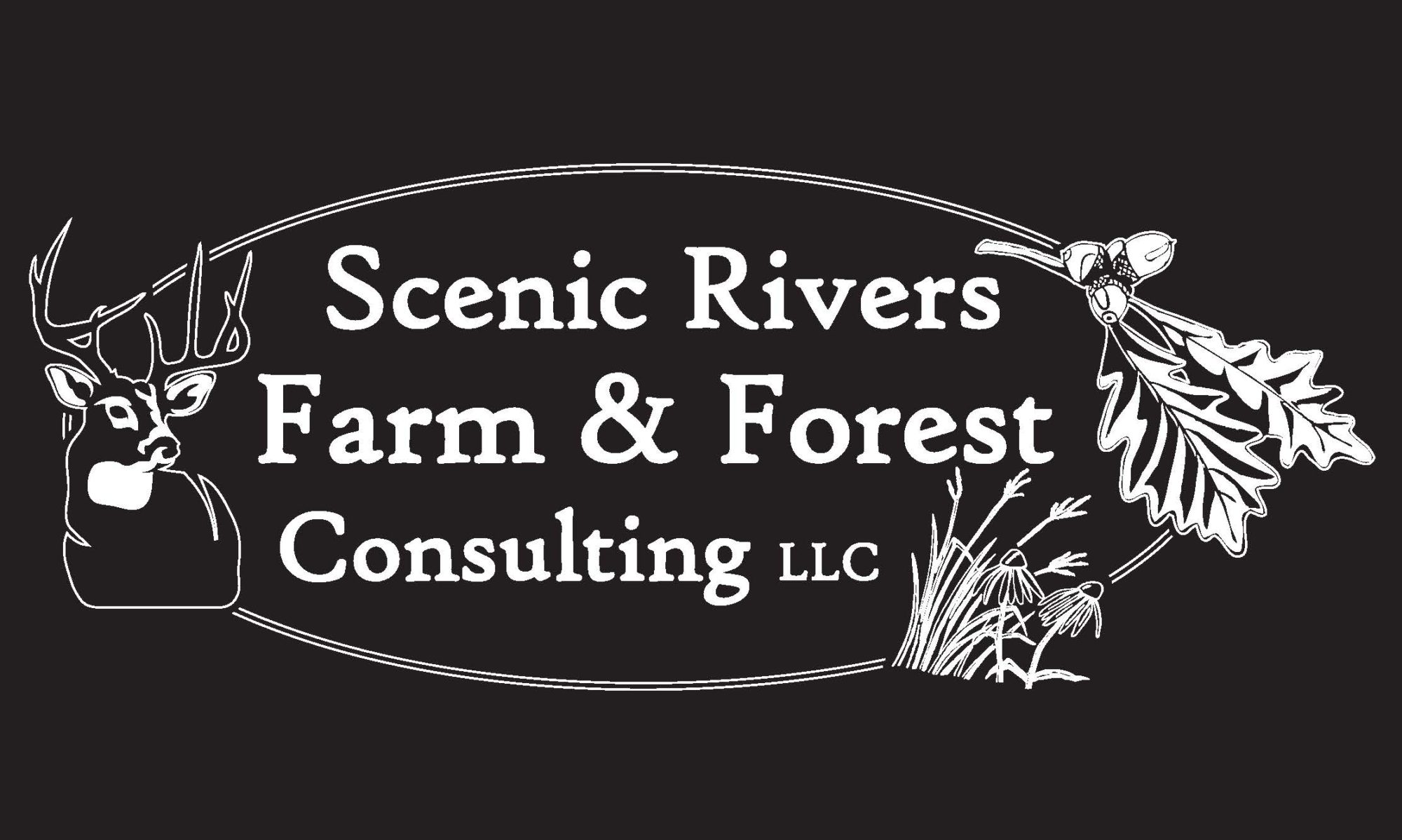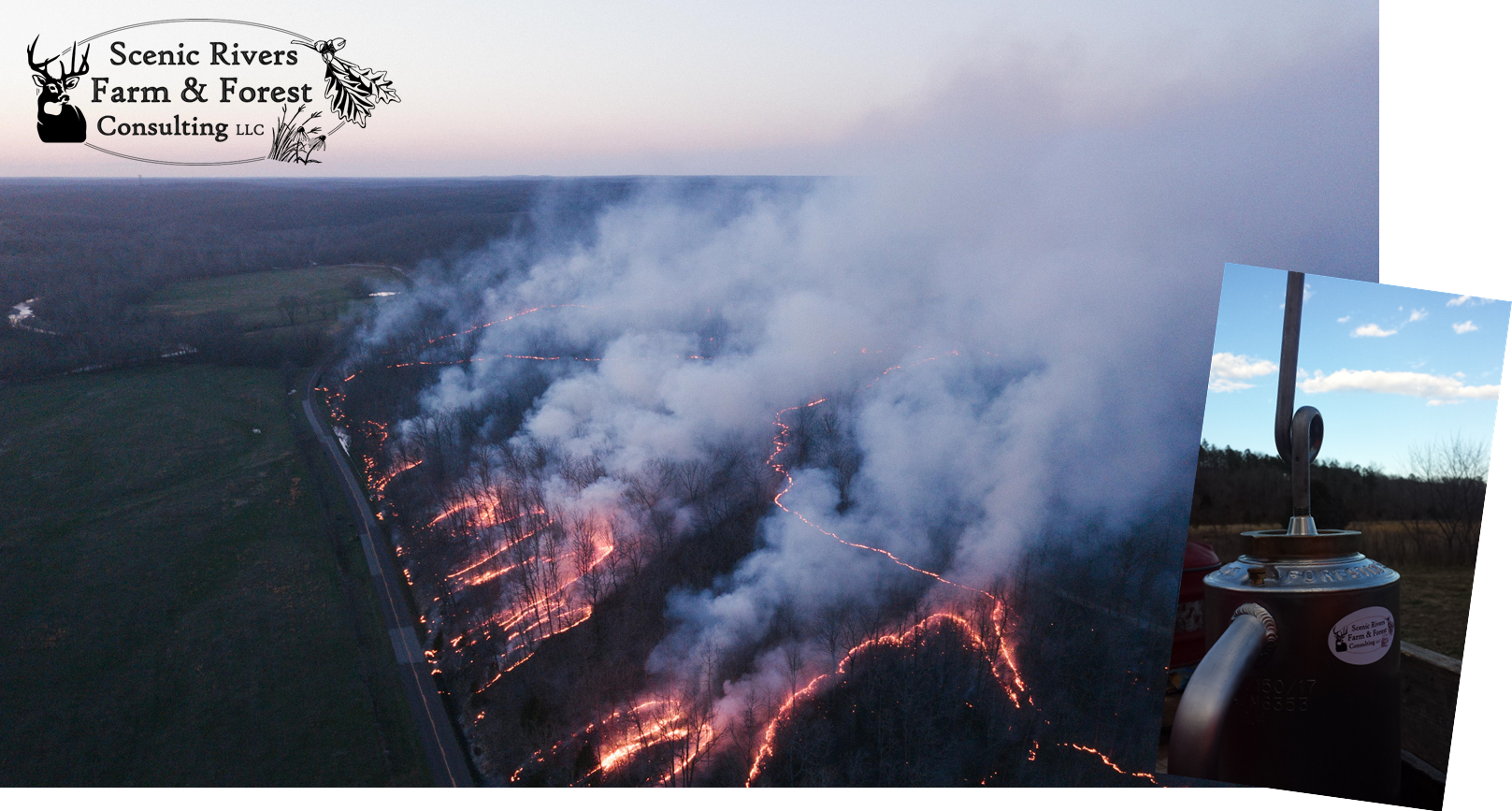Prescribed Fire can be used in the Ozarks and all across the central hardwoods region to naturaly influence plant mix and arangement in a way that meets your goals for your property, whether it be to increase or improve wildlife habitat, increase or improve forest regeneration, or improve grasslands for livestock.
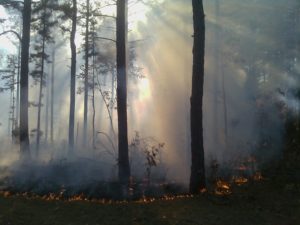
Prescribed fire can encourage additional food resources and enhance cover for a wide variety of wildlife species. Fire sets back existing vegetation and stimulates fresh growth from the seeds waiting under leaf litter and from sprouting of woody plants. The fresh plant growth is more palatable and nutritious for grazers and browsers as plants are more digestible and contain higher nutrient levels after a prescribed fire.
Fire typically leads to increased herbaceous forage and browse, as well as soft mast, but depending on your goals and objectives for your property, thinning your woods may also be needed. Forage, browse and soft mast food production is directly related to the amount of sunlight entering through the canopy of the woods. In closed-canopy stands, the increase in forage and browse may be negligible if thinning is not accompanied by fire. At a minimum, 20 to 30 percent sunlight into the stand through a harvest and or TSI prior to or soon after burning is important if increased forage & browse is desired.
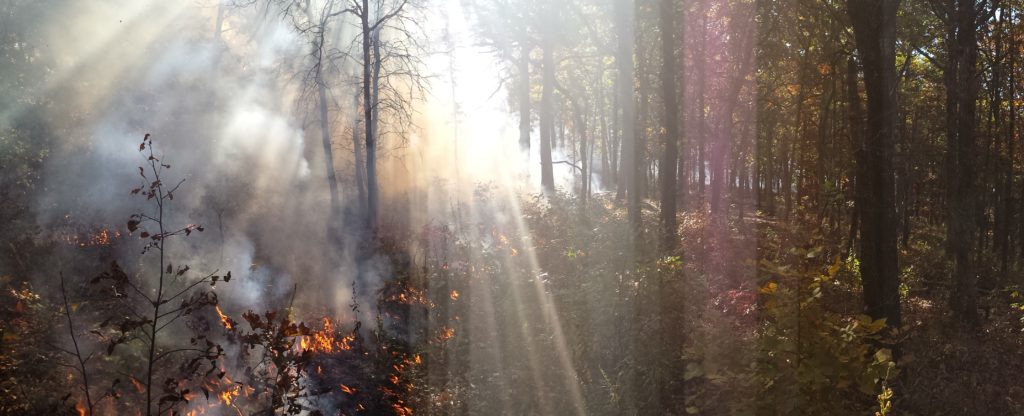
Fire is the tool of choice to maintain open woodlands, savannas, glades, and other high-quality early successional habitat for popular wildlife such as bobwhite quail, turkey, and deer. Both dormant-season and growing-season fire can be used to manage these habitats. Relatively short fire-return intervals (two to five years) should be used for optimal wildlife habitat. For deer, prescribed fire in a thinned woodland can provide 10 times the amount of forage and increase fawn survival because of the increase in cover. For turkeys, burning increases cover and a more diverse variety of plants that produce seed, soft mast, and attract bugs. For quail, clumps of grass from the previous year is important for nesting structure. Soft mast is also an important food source. Therefore, when managing open woodlands, savannas and glades for bobwhites and other wildlife, an annual fire-return interval is not recommended. Where woody stem density needs to be reduced, late growing-season fire should be used instead of a shorter dormant-season fire-return interval. It is very helpful to prescribe fire on a different area of the property every year, setting back succession and providing diverse structure and composition on different parts of your property and at different times of the year.
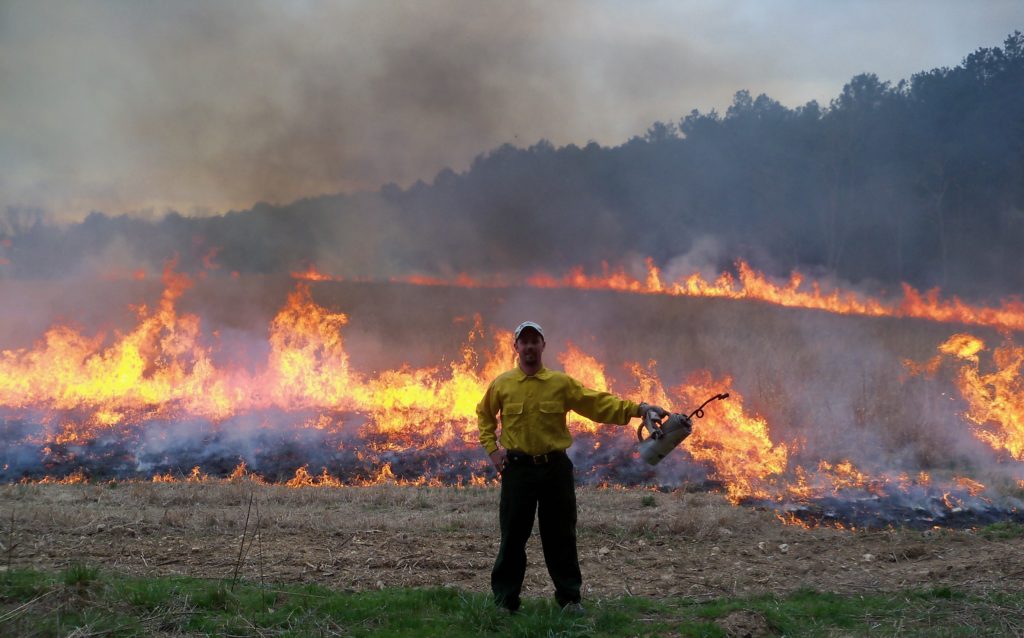
Prescribed Fire in native grasslands can be used to improve forage quality and reduce woody competition. New grass growth following fire is more palatable to livestock. New shoots arising following fire have a greater crude protein content than unburned grass at the same stage of maturity and cattle prefer to graze areas that have been recently burned.
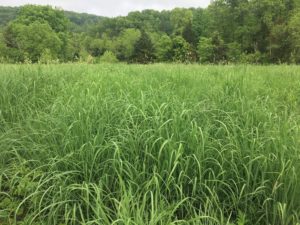
A good balance of the use of fire and herd management is important for healty grassland soils. Though fire is good, it is important to note that nitrogen and phosphorous are made availible to plants and increase palatability, but some nutrients are also volatilized during the burn and long-term annual burning can deplete soil nitrogen and decrease soil health.
Though there are some real benefits to wildlife from prescribed burning, lets not overlook its usefulness as a tool to improve quality forest stands. Sometimes there is a need to improve the quality and quantity of regeneration in forest stands, particularly on high quality sites where highly competitive undesirable tree species such as maple, blackgum, yellow poplar, etc can out compete oaks that have been suppressed in the understory. Carefully used prescribed fire top kills and stimulates a new fresh and vigorous sprout that will have a chance at competing with aggressive undesirable species, without damaging large quality trees. Fire reduces the thickness of an accumulating leaf litter layer that can sometimes reduces sprouting of viable acorns and pine seed that attempt to take root in the forest soil. Pine seed needs contact with exposed soil in order to sprout and grow.
If having prescribed fire implemented in a woodland or a grassland setting on your property is something you want to look into, please contact us below, and we can discuss how we can help.
rm 1″]
